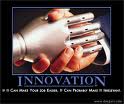The technological breakthrough that has brought us into this modern world where sweet success has been made possible despite strings of failure we are facing.
Actually, nobody wants to fail but it is something that is unsolicited and unpredictable, it can be learned from our own misgivings to commit errors as we go along, mainly of our being human and our quest to improve the world we live in.
It can be a tragic event of our life that spells disaster and from there we learn a vital lesson as to the specific cause of failure which we can uncover, let it documented, reworked and accordingly make preventive improvements through our own creative innovation.
The wisdom of trial and error process that has been adopted in building machines and developing untapped industries, has over the years resulted in desperation and loss of lives to speak of.
No one either aims for failure or disaster but it is something that it can eventually happen. It seems that failure or disaster represents the big question that is thrown at us which needs an immediate answer or resolution to address the problem through our own creative innovation.
Our present technological advancements have undergone a list of failures which history of technology suggests that such trending to end is unlikely. Devices fall out of favor, but seldom if ever get abolished by design. A lesson learned about the cause of Hindenburg explosion by replacing flammable hydrogen gas with inflammable gas helium as lifting gas rather than scrapping rigid airships.
The events that surround the following tragedy as to the sinking of Titanic, the meltdown of the Chernobyl reactor in 1986, The collapse of Washington’s Tacoma Narrows bridge in 1940 and the World Trade Center’s fall in 2001, have opened the eyes of our design engineers to help them grasp a better understanding of what has caused the failure of the disaster.
As Dr. Henry Petroski, a historian of engineering at Duke University and author of “Success Through Failure” said “Nobody wants failures. But you also don’t want to let a good crisis go to waste.” Failures he further said “always teach us more than the success about the design of things. And thus the failures often lead to redesigns to new improved things.”
